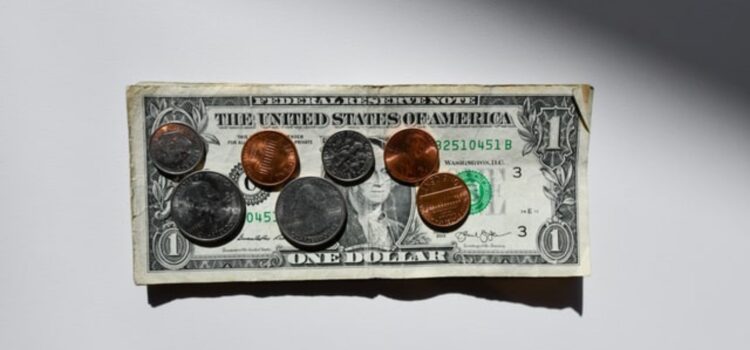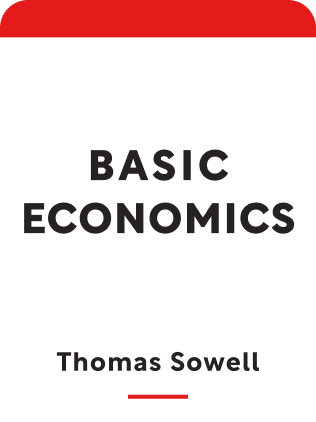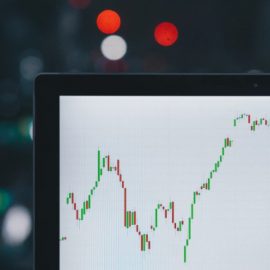

This article is an excerpt from the Shortform book guide to "Basic Economics" by Thomas Sowell. Shortform has the world's best summaries and analyses of books you should be reading.
Like this article? Sign up for a free trial here .
How are resources allocated in a market economy? What is the advantage of price-based resource allocation?
In a free-market economy, resources are allocated by prices. In this way, a market economy is self-regulating, allowing real-time coordination across millions of goods and services, without any central authority knowing and setting all the prices.
In this article, you’ll learn how prices allocate resources and how supply and demand respond to prices.
The Economics of Resources Allocation
The most straightforward way to allocate resources across an economy is for a central authority to decide what to do. In a feudal economy, the lord tells people what to grow and how to sell it. The Soviet Union operated similarly, with the government determining how much steel to produce in Bulgaria and how much wheat to be grown in Ukraine.
The problem with this method is that economies are so complex, with many millions of products and services, that allocating resources optimally across millions of items is incredibly difficult. Counterproductive incentives also arise in these centralized systems which is why in modern economies, resources are allocated without a centralized authority.
How are resources allocated in a market economy? Market economies use prices to allocate scarce resources.
On a micro-level, each consumer and producer makes transactions with other individuals on whatever terms they can agree on. The terms often consist of prices. Even though a market economy has millions of goods with millions of prices, each party in the transaction just needs to keep track of the few prices relevant to their own decision-making, not the entire economy’s prices.
For example, a camera lensmaker doesn’t need to know the absolute specifics of her customer’s needs—for instance, that museum photographers can’t use flash and therefore need complex, expensive optics to take in low light – she can simply charge more for a more complex product, and let demand sort itself out. A complex reality is summarized in a single number—the price.
These transaction prices have ripple effects throughout the economy, with one price in one sector being transmitted to related sectors automatically, without passing through any central authority. These prices determine how much of each resource gets used where.
If someone else produces a better product, or a lower price for the same product, that fact gets conveyed through prices, not a central authority, and is acted on by consumers. Prices also mean that producers and consumers don’t have to know why things are getting cheaper or more expensive – they can simply make decisions based on prices alone. If a vast supply of rare earth elements is discovered in Zimbabwe, this may ultimately make smartphones cheaper, but consumers don’t have to know about this discovery to enjoy the benefits, and central authorities don’t need to control this pricing.
How Prices Allocate Resources
Prices provide financial incentives – profits and losses – to affect behavior in the use of resources and their resulting products. Profits motivate people to provide more of a product that people want, and profits are often the focus of popular press (“greedy capitalists!”).
But just as importantly, losses force the producers to stop producing what consumers don’t want. Losses prevent the inefficient use of scarce resources, allowing those resources to be used elsewhere where they will produce better output.
In general, a producer will try to maximize her profits and produce as many units as possible without incurring a loss per unit. She will bid higher for resources until she starts losing money per unit – when the cost to produce exceeds the amount people are willing to pay. As she bids up the price of resources, these resources become more expensive for other producers, which increases the cost of their products.
However, the producer will reach a ceiling in consumer demand when, beyond a certain supply, consumers are indifferent or unwilling to consume any more. The producer will not produce beyond this point. A natural equilibrium thus results when all producers bid for resources to meet their consumer demand.
Here’s a concrete example:
- People want a variety of milk products – ice cream, yogurt, cheese. They are willing to buy these products at different prices.
- When demand for cheese goes up, cheesemakers use additional revenue to bid for milk that would previously have gone into making ice cream or yogurt.
- This increases the price of milk, which increases the prices of ice cream and yogurt, which makes consumers less likely to buy these at higher prices.
- Each product has its own demand curve. If consumers are willing to buy ice cream at a higher price but not yogurt at a higher price, then more of the higher-priced milk will go into ice cream making than yogurt.
- At some point, the demand for cheese will plateau. Even if the cheesemaker bids up the price of milk further and increases the cost of cheese, consumers would not be willing to buy cheese at this higher price, which would cause a loss for the cheesemaker and force a reduction in cheese production.
- Thus, each producer will buy only as much milk as necessary to repay the cost of producing cheese, plus their desired profit.
- The repercussions of this flow to other markets – higher milk prices mean cows may live for longer instead of being slaughtered for meat; this increases not just the price of meat but also the price of leather and baseball gloves, fertilizer and feed. This creates a network of global scale, so that demand for cheese in the United States may mean more expensive produce in Japan.
Again, importantly, no one at the top is coordinating all of this activity. In a market economy, resources tend to flow to their most valued uses automatically. Millions of individual consumers, producers, products, and resources are connected in a web of mutually reinforcing interests, where a change in one element is passed along the chain to millions of others.
Note that these adjustments are made in increments at the margin, not in categorical on/off terms. In equilibrium, each incremental amount that is used for one thing is equal in value to what it’s worth in other uses.
A useful metaphor here is water finding its level. Resources flow toward where the rates of return are highest (where the unsatisfied demand is greatest) until competition arrives, returns are evened out across the economy, and the water finds its level. (Shortform note: frothier waters with a frenzy of activity, possibly unoptimized, may be an indicator of a rapidly growing industry.)
One consequence of market economies is that individuals may have different outcomes while the society improves as a whole. This can seem “unfair.”
- For example, cheap automobiles improved the standard of living for an entire population while making saddlemakers and horse caretakers largely obsolete. In some sense, it’s unfair for people of similar skill to earn less than others due to unforeseen changes. Yet the benefit is the entire economy operates more efficiently. Would allocating resources suboptimally, to benefit a few at the expense of society at large, be “fairer”?
Supply and Demand and Prices
Consumers tend to buy more at a lower price and less at a higher price. Similarly, producers supply more at a higher price and less at a lower price.
Supply and demand are not fixed but instead respond to prices. For example, it’s a common mistake to consider the supply of oil as fixed – that when the price of oil rises, a fixed quantity of oil has risen in price. In reality, for a single producer, when the price of oil falls below the cost of extracting the oil, it will shut down, while producers with lower costs may stay open. Likewise, when the price of oil rises, previously unprofitable producers will resume production and generate more supply to meet the demand.
Similarly for labor, when people say there is a “shortage of primary care doctors,” they tend to be fixing current supply at today’s prices, while projecting some other factor forward (like population growth). In reality, in a free market, a shortage will cause prices to rise, which will in turn create more supply.

———End of Preview———
Like what you just read? Read the rest of the world's best book summary and analysis of Thomas Sowell's "Basic Economics" at Shortform .
Here's what you'll find in our full Basic Economics summary :
- Why we use money, rather than bartering our services with each other
- Why some nations prosper, while others stay poor despite vast natural resources
- How rent control might actually reduce housing supply and quality





